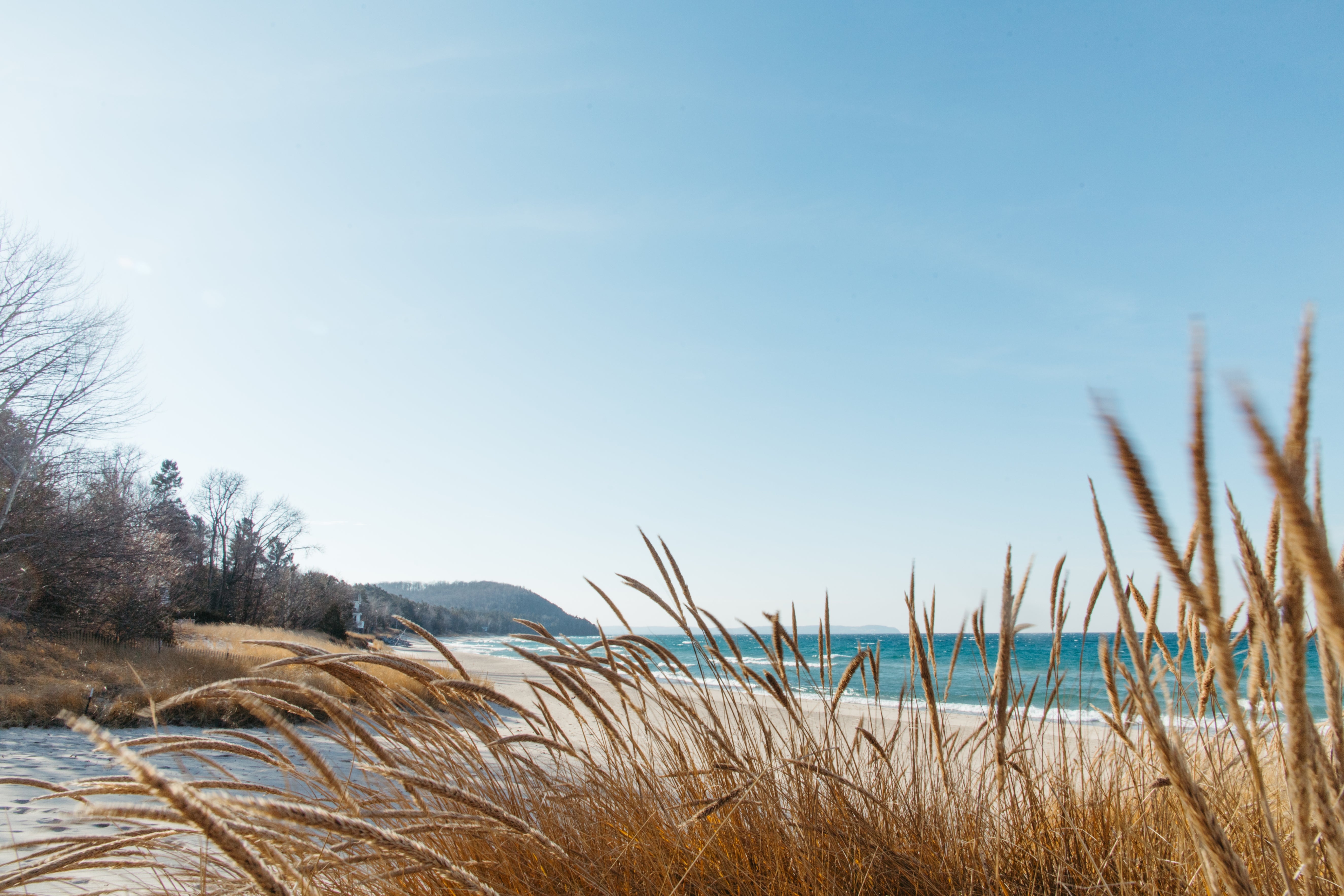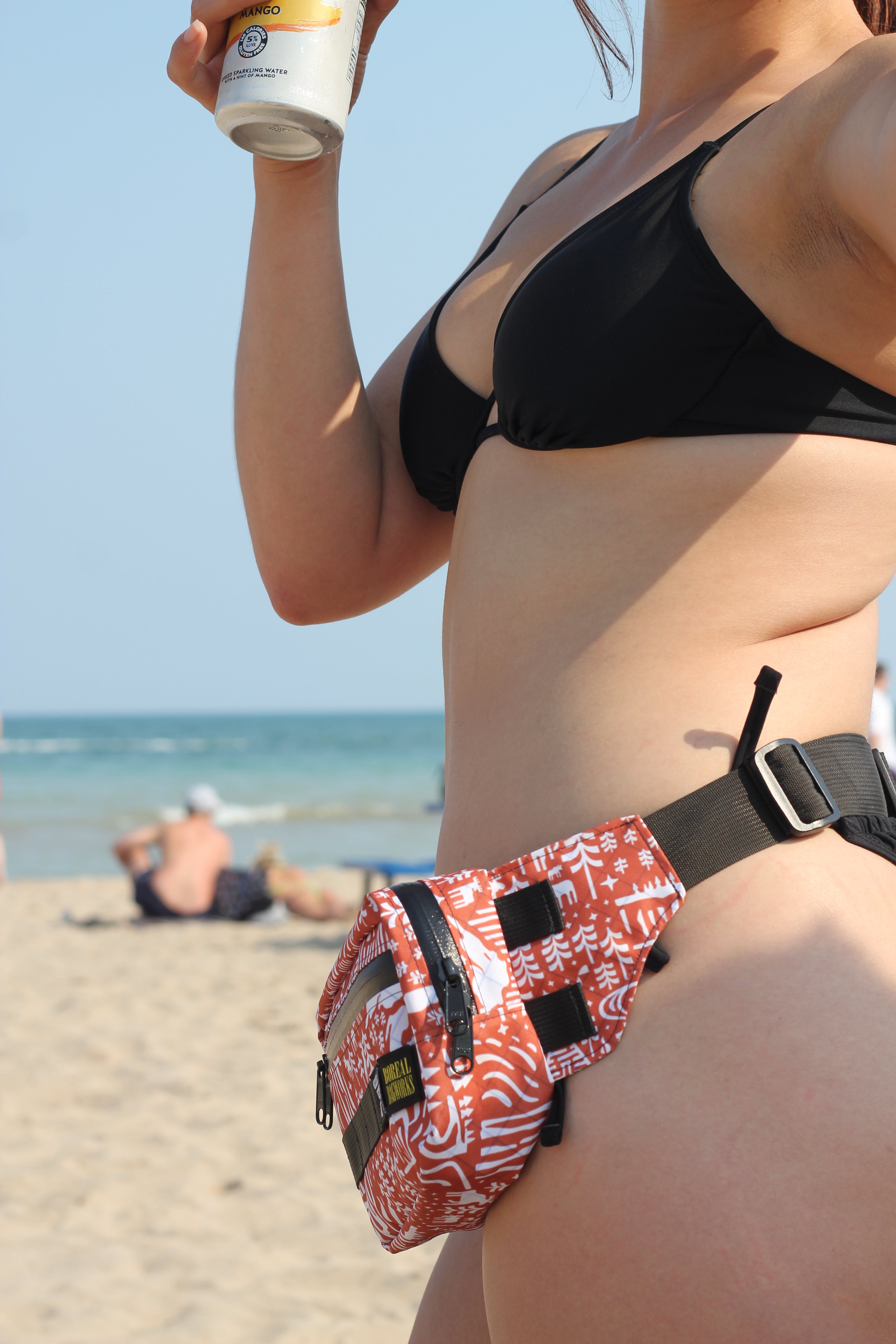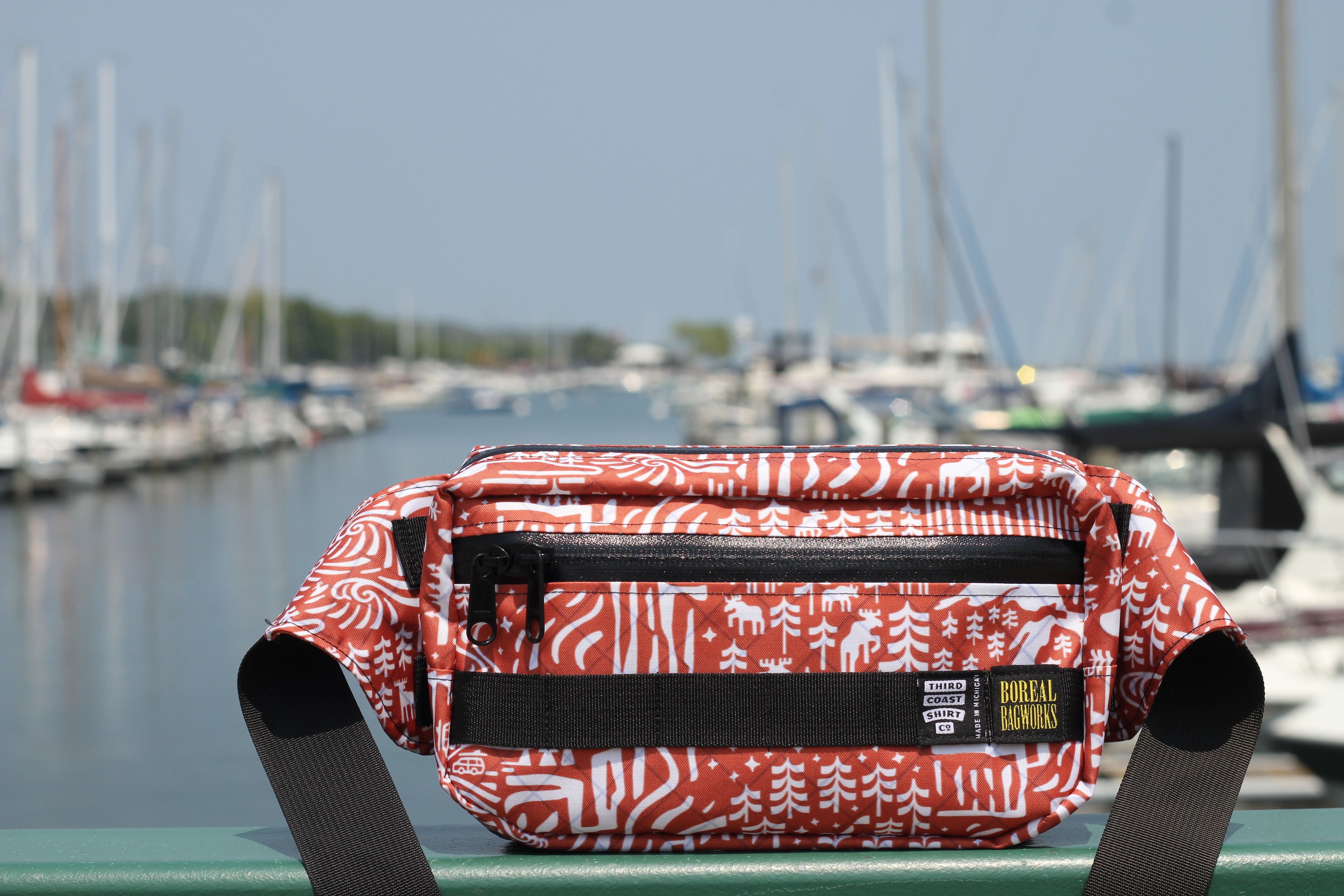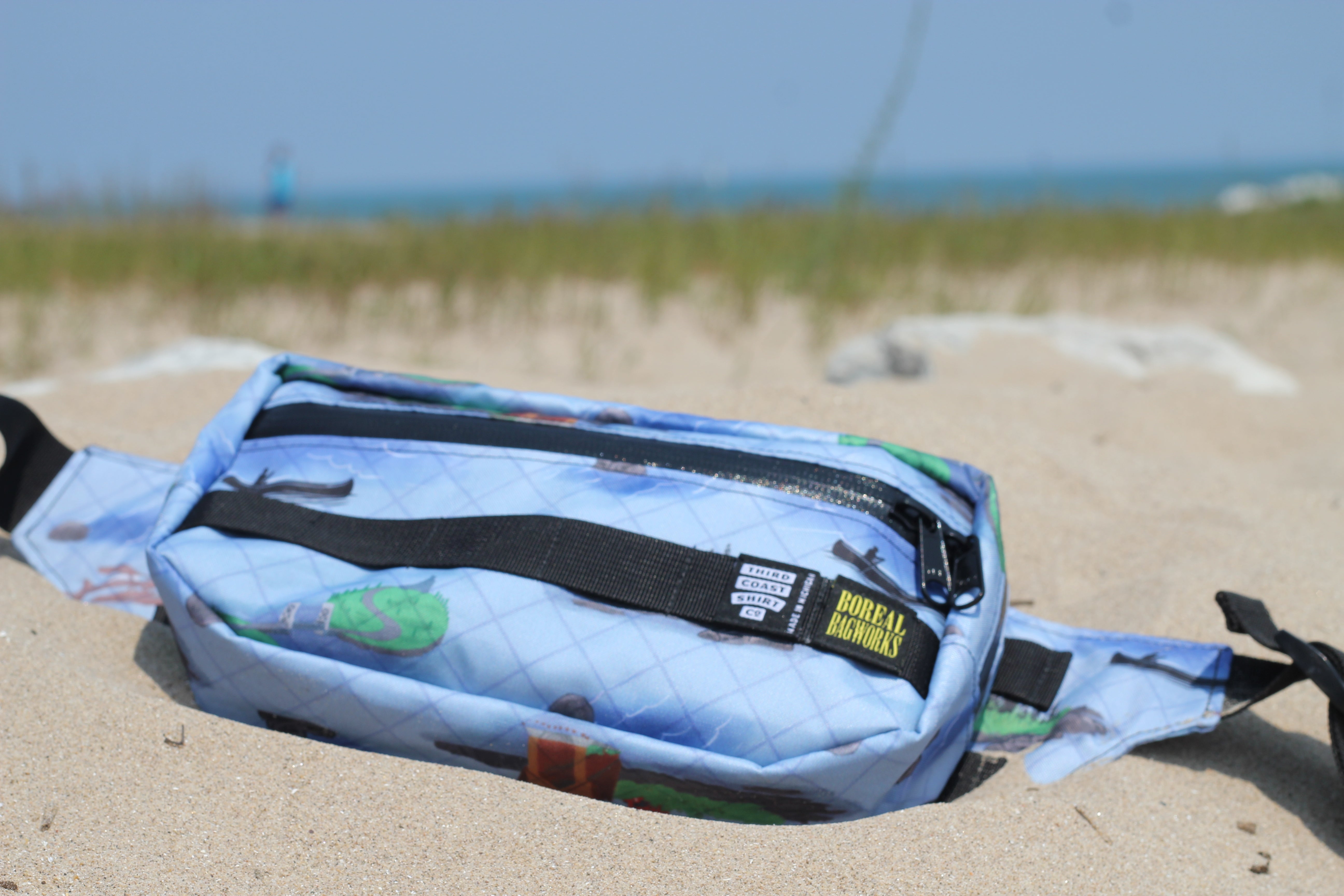
Crash Course: Hemp, the Fabric of the Future
Posted on
This is the story of hemp, the most sustainable, durable, and comfortable textile currently used in clothing production, and its tumultuous history. Let's dive into what we use it for, how our suppliers grow it, and why it's such a big part of our brand.
Background
We make our Beach Shirts out of 100% hemp linen, which is well known for its durability and comfortability in hot weather. This fabric boasts a few key advantages over cotton and linen, which are popular in traditional Hawaiian shirts, which we'll get into in a moment. The hemp used in our clothes is non-GMO, owing to the fact that the plant is naturally resistant and doesn't require herbicides or pesticides to grow and maintain.
Hemp was a common crop in the United States in the 1800s, but the 1937 Marijuana Tax Act all but made it illegal, including it with its THC-heavy relative. Doubling down on this in the 1970s during the War on Drugs, industrial-scale agriculture of the plant seemed like a doomed effort. Yet, nearly 50 years later, as many US states began to decriminalize and legalize cannabis, hemp has similarly resurged as an incredibly valuable crop for many purposes.
 Harvesting hemp in China.
Harvesting hemp in China.
Benefits of Hemp Fabric
Hemp has a few natural properties that make it ideal for clothing. As mentioned, it's durable, lasting (virtually) forever if maintained properly. It has significant resistance to abrasion, heat, and weakening in the sun. Thanks to this, we can build heirloom-quality garments that wear in, not out, and will only get more comfortable with wear and washing, much like a pair of leather boots. At the same time, equal emphasis is on comfort, which is another of hemp's strong points.
The fabric is porous and breathable, drying quickly if you fall in a lake or are in an intense game of cornhole on an 80% humidity day. Hemp has an ultraviolet protection factor (UPF) of 15, which is actually boosted slightly by our prints, and keeps all but about 6% of UV rays off of you. Finally, there are natural antimicrobial properties throughout the plant even after processing, which doesn't hurt.
We've experimented with heavier hemp-cotton blends, linen, rayon, and other alternatives, which we might explore down the road, but our hemp linen is perfect for warm days under the sun. At 3.9 ounces per yard, it's the perfect weight for warm summer days, but will work equally well for spring skiing (my favorite time of the year) or cooler early fall temperatures.
 Preparing hemp for the retting process.
Preparing hemp for the retting process.
Aside from its benefits in fabric form, hemp is famous sustainable to grow. As mentioned before, most industrial hemp production is GMO-free, but in addition to this, it uses about 20% as much water as a comparable yield of cotton, and even uses less than flax (linen). Hemp has the added benefit of being an excellent companion crop for gardens and farms, bordering other plants as a deterrent to insects and infestations. As far as our production goes, hemp is typically grown in family-style co-op farms, at roughly 120 plants per square meter.
As a crop, its history is famously tied to cannabis, which is technically the same species. The difference? Tetrahydrocannabinol (THC) levels, the primary active element in cannabis. Hemp plants contain 0.3% or less THC by dry weight, which is the somewhat arbitrary but longstanding determining factor. For hundreds of years, hemp has been regarded for its durability and sustainability, and is currently used in textiles, paper, animal feed, and food products.
 Finished hemp fabric in rolls.
Finished hemp fabric in rolls.
Hemp Production in Our Supply Chain
Our hemp is sourced from a variety of locations globally, but primarily from China. There's been a stigma around hemp for so long in the US that mass agriculture is only just beginning (it was illegal before the 2018 Farm Bill was passed), making more local sourcing nearly impossible at the moment. That said, our suppliers are extremely involved in not only production quality, but ensuring that those people involved in production have a high quality of life.
A lot of the premium that goes into our materials is captured in this area. All hemp and cotton is certified organically grown by Control Union, according to the National Organic Program. Hemp is grown by local farms and brought to a central factory for processing. These factories handle retting, degumming, and fiber preparation processes, and are certified to ISO 9001:2000 standards. Where 25 or more workers are present, factory workers join the China Federation of Trade Unions. Workers receive apartments to live in and for retirement, as well as on-site daycare and 9 years of schooling. Medical clinics are on-site as well. Employees receive 91 holidays annually and work 6-hour shifts, with retirement typically happening at age 55.
We're proud to say that our hemp goods are certified SBP® Sustainable Biodegradable Products. A few other factory certifications that we're proud of include an effluent water system being a closed-loop process based on China's Environmental Impact Assessment.
Separate from hemp but equally critical, our US-based printing process exclusively uses Oeko-Tex certified and biodegradable inks. This ensures that your shirt will not contain any caustic chemicals used by many other manufacturers. This process also avoids the use of water, while comparable overseas printing processes use up to 40-60 gallons of water per shirt.
We've made the most sustainable and ethical choices at every point in our supply chain; this is one of our core values. Hemp has been absolutely essential to our construction of the highest quality, most sustainable, and longest-lasting Great Lakes beachwear available. We're excited about the future growth of hemp agriculture in the US, and it's our hope that you join us in our mission to keep the Third Coast wild!
Subscribers only: Get our Microadventure Guidebook: Lake Michigan!
Sign up for our newsletter, and receive a detailed guidebook to microadventures [an afternoon or less] around the lake.
Bootjack Sling Pack - Made in Michigan
Bootjack Sling Pack - Made in Michigan
$65.00
$50.00
2 liter hybrid sling bag / fanny pack, recommended for everyday use, hiking, skiing, biking, or whatevering. Holds exactly 3 beer cans in the large main pocket with a phone sleeve on the interior, in addition to a smaller front zip pocket. All zippers are YKK AquaGuard. ECOPAK is waterproof, and this pack is water resistant and tested in moderate rain.
Our Bootjack Sling Pack can be taken directly from singletrack to a beer festival, and that exact scenario is what we designed it for. Finally, the days of duct taping my wallet to my chest and hiding my raincoat behind an unsuspecting brewery's table are over.
This bag is built using sustainable and durable ECOPAK, and made in Michigan.
This is part of our legacy Made in Michigan line from our first year of production, and features Third Coast Shirt Co. branding. Once these are gone, they're gone, at least in their current form.
Made in Michigan
+
Made in Michigan
+
Handmade in Michigan by people who care. These bags are a collaboration with our good friends over at Boreal Bagworks. Check them out!
ECOPAK Construction
+
ECOPAK Construction
+
100% ECOPAK sailcloth exterior and recycled bag cloth interior, with each pack upcycling about 5 plastic water bottles and reducing carbon emissions by 0.25 lbs.
100% recycled film, solvent, and VOC-free adhesive, and PFC-free durable water repellant (DWR) that's non-toxic to humans and doesn't persist in the environment.
Product Care
+
Product Care
+
In the event of spillage or stains, wipe the pack down with a wet rag and use dish soap if needed. Hang to dry. Do not expose to high heat, such as a laundry dryer.
ECOPAK is waterproof and significantly abrasion and tear resistant. Store out of sunlight when possible to prevent fading over the life of the pack.
Fit Guide
+
Fit Guide
+
This pack is one size fits most. The strap circumference is adjustable from 36" to 50" for wear across your chest/back or hips.
0 / 5
(No reviews) No reviews

Join us on our mission to Keep the Great Lakes Wild.
Through 1% for the Great Lakes, we're working to protect wilderness areas around Superior, Michigan, Huron, Erie, and Ontario.

























